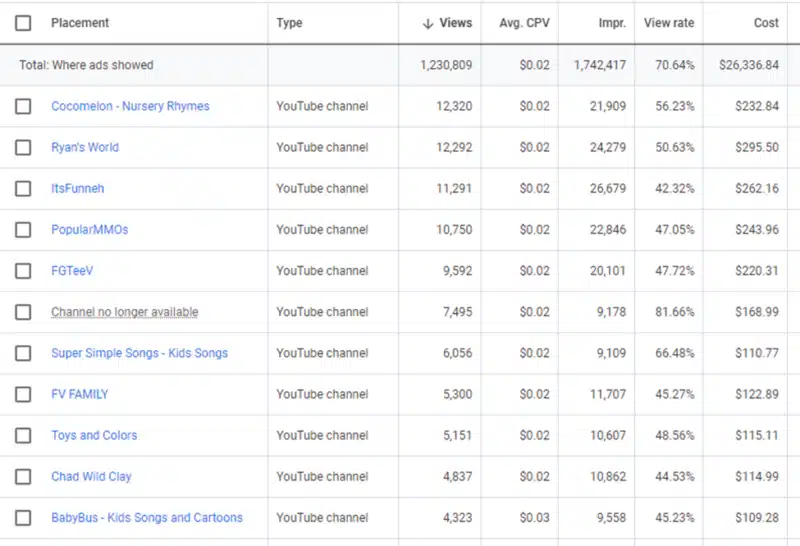How a self-audit PPC checklist can protect your work from external audits
If you don’t audit your own work, eventually someone else will – and the impact on your work, you and your operation could be catastrophic.
And honestly? That’s a good thing.
PPC audits are powerful. External and internal audits are needed for the direct and indirect value they bring to your operation.
Audit types
First, let’s talk, non-extensively, about the most common types of audits:
- New biz pitch audit: These are straightforward – the goal is to find (usually surface-level) holes in the current efforts. Expect to do a lot of remote searches and ghosting your IP. You’ll likely use third-party tools like SimilarWeb, Semrush, Adthena and SpyFu to estimate competitor spending and determine their approach. No doubt about it, these aren’t fun. But the payoff could be literal dollars of new business.
- The “under the hood” audit: This is done when you’re pitching new business and the brand is already over their current agency. The business gives you some degree of keys to the castle with access to Google Analytics and their Google and Microsoft ads accounts. These are fun. There will be few, if any, unanswered questions. It’s also easier to win business and a great way to kick an operation in the gut when they are already down.
- “The consultant” audit: Huge pain, where the brand has brought in a “consultant” who is all-knowing, and questions the most minute things, forcing you to question your best practices and decide if truly is best in class.
- Self-audit: This is a noble and shockingly helpful self-check scenario. This is you doing a gut check of your own work on a semi-regular basis (monthly, quarterly, annually, etc.) It also helps you find out when the engines changed something via a glitch or just forgot to tell you, and you can go back to them self-righteously and demand your money back.
- The “invited third-party” audit: Honestly, these are my favorites. Anyone working on an account long enough gets “account fatigue” and cannot see the forest behind the trees. Here you bring in a trust third-party (outside operation or someone in-house who doesn’t work on the business) to eyeball the business. Less pressure, more trust, less “throwing of hands.” This becomes educational for all more than anything else.
No matter the type of audit, the end goal is the same: to find the brand a way to make more profit, directly or indirectly – whether through incremental revenue generation or cost-savings operations.
Doing a great audit
How do you do a great search account audit? “Great” is a relative term in search audits.
It really comes down to what level of access you have. That will decide your next steps for the audit.
But it always starts with a handy QA checklist consisting of settings that need to be reviewed – from simple things like GTM on the site, GA on the site, and whether geotargeting is in place, to more advanced scenarios, such as: Are Bing syndicated search partners on, is their unique ads in rotation for RLSA audience and are ads on/off during low sales periods of the day.

This QA checklist will have hundreds of checkpoints to review. It is designed to help you successfully launch a new campaign. But an audit is basically a QA checklist in reverse.
What makes audits so powerful?
Well, it is easier to explain findings than explain their potential. All of these findings are from real audits:
- Scenario 1: A credit reporting brand refused to allow the team to bid on the term “free credit report.” An audit found multiple keywords mapping to that term within an SQR, all with higher CPCs. They were accounting for 73% of those keywords traffic. Each keyword had a Quality Score of 3. If the brand actively bid on the term “free credit report,” with appropriate ad copy, the QS would come in closer to 5. Estimated cost savings by making this change to the client was $573,000 per fiscal quarter.
- Scenario 2: A car wash brand was trying to figure out how to save funds while driving more visits to their locations. It was documented that the average target consumer would drive a max of five miles for a car wash in their markets and would research the car wash only an hour before going. It was discovered that geo-targeting had a 10-mile radius for advertising, ads ran 24/7 and no local search campaigns were live. Roughly 30% of the ad budget was being spent on consumers too far away and/or unlikely to come given the time of day. Adjustments to both geography and daypart were made to reallocate funds to local campaigns.
- Scenario 3: Sports nutrition CPG was informed by their agency they were getting stellar performance on YouTube front-end metrics, and they were. However, the data was only surface level. An audit of content triggering ads was done. Keep in mind, sports nutrition means scantily clad individuals, sweating, drinking protein shakes and pre-workout powder. The content audit noted that the agency failed to put negative parameters for brand safety in place. 40% of spend for a year was spent on videos related to Cocomelon, BabyBus and Super Simple Songs. Ultimately, the brand took legal action against the agency running YouTube based on the audit. Seeking damages for the amount spent inappropriately.

- Scenario 4: A QSR brand was in review for a new agency and gave all operations competing in the RFP a look “under the hood.” To the surprise of all the operations, it was observed that the brand was not using brand keywords while having rather weak SEO. In addition, 10% of budget spend was used during breakfast hours, which accounts for less than 3% of total revenue, while actively losing out on impression share due to budget. This finding (after we won the business) led to bidding on brand terms (and the good old “PPC+SEO: 1+1=3” theory), generating a 10% lift in PPC+SEO revenue. In addition, ceasing PPC during breakfast hours allowed for a reallocation of budget to later in the day during peak periods and reduced impression share loss due to budget.

- Scenario 5: This was a well-timed internal review, and honestly, it still sends a cold shiver down my spine. About 10 years ago, we had to lay off an employee, and he was incredibly displeased. On his way out, he had created automated rules to raise manual bids by 100% 3x a day, every day, and to raise budget caps 1,000% once a week. The cherry on top was that he had created a rule to automatically reactivate campaigns if they were paused every two hours. An audit of scheduled activity and rules revealed all of this and was performed the day after his departure. If you’re wondering, the answer is yes, he lost his severance. We had to provide a legal deposition, and an unnamed search engine was notified by various legal teams to give activity over based on IP address.
- Scenario 6: Honestly, this was the weirdest audit of my career. In 2011, my team was understaffed, and we were running a well-known credit card brand business. This brand promoted a self-created holiday to encourage holiday shopping at local stores rather than online. It was decided to run an online video campaign with the brand. The targeting was pretty wide open. We just had a list of negative keywords. We asked the video platform to run it for us, and they obliged. It was a very short run, a total of five days. We audited the oddly terrible performance after the run to figure out why the performance was so bad. The well-known video platform had used our negative keyword list (a list littered with a wide variety of terms showcasing the worst of human depravity) as the target list. This audit resulted in a reimbursement of $500,000 of media spend and 25% on top of it for pain and suffering.
I share all these scenarios not to frighten, only to inform.
Audits happen. Protect your work.
In the past five years, I’ve gone through four audits on my work. Why? Because a consultancy told the brand it was needed.
It’s nerve-racking and anxiety-provoking, in part because every operation has a different point of view on the proper way to deal with work.
However, my team regularly does internal audits, starting with a simplistic QA document. So we were able to retain our work because “our house was in order.”
A QA document does not take much to create. It just requires you to make an excel spreadsheet, with every setting in a UI, and an hour of your time to review it regularly.
An audit, especially done by an uninvited outsider, is never a welcomed experience. But if you regularly audit yourself and/or your team’s work, it won’t be a problem for you when an outsider does it.
Doing this will give you the most power possible within the search marketing world.



